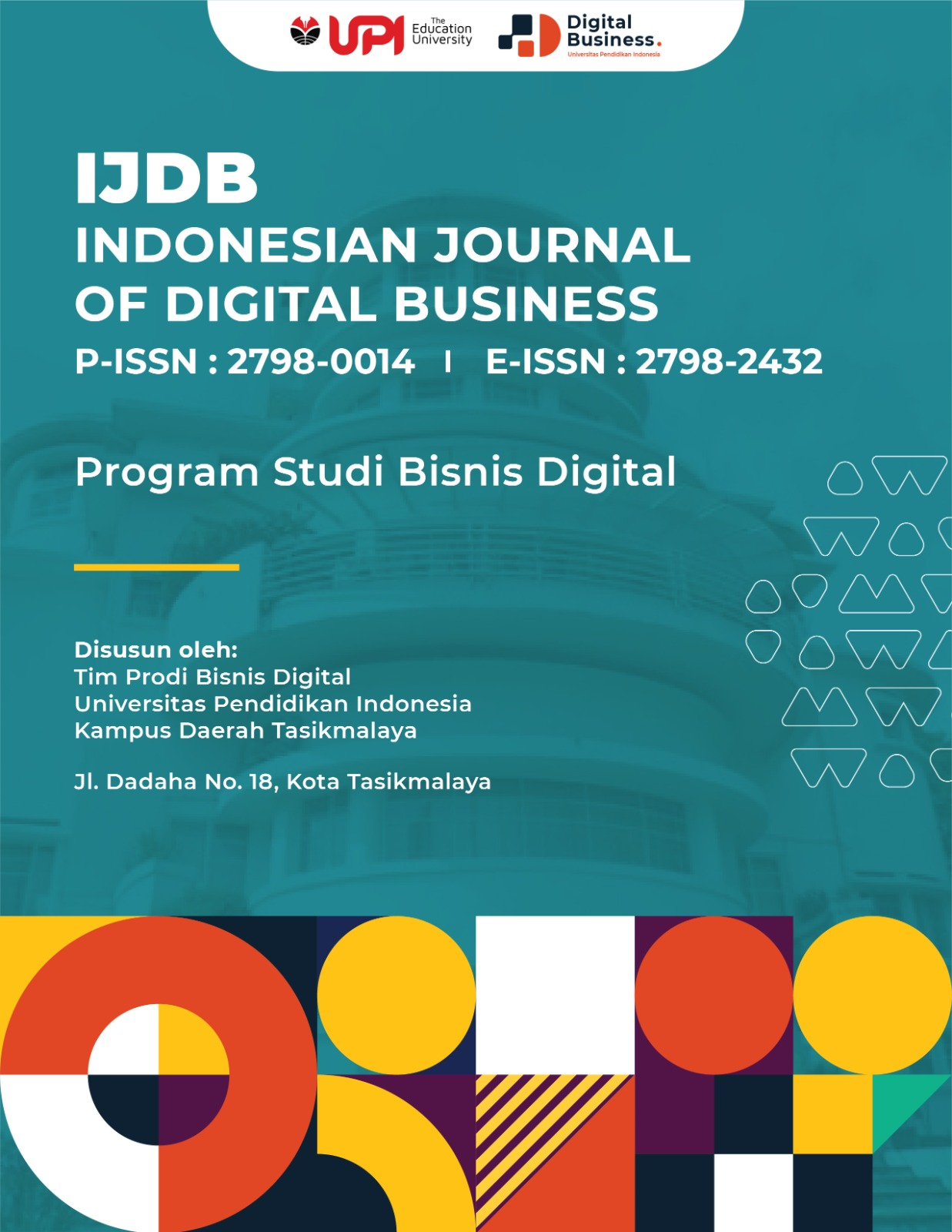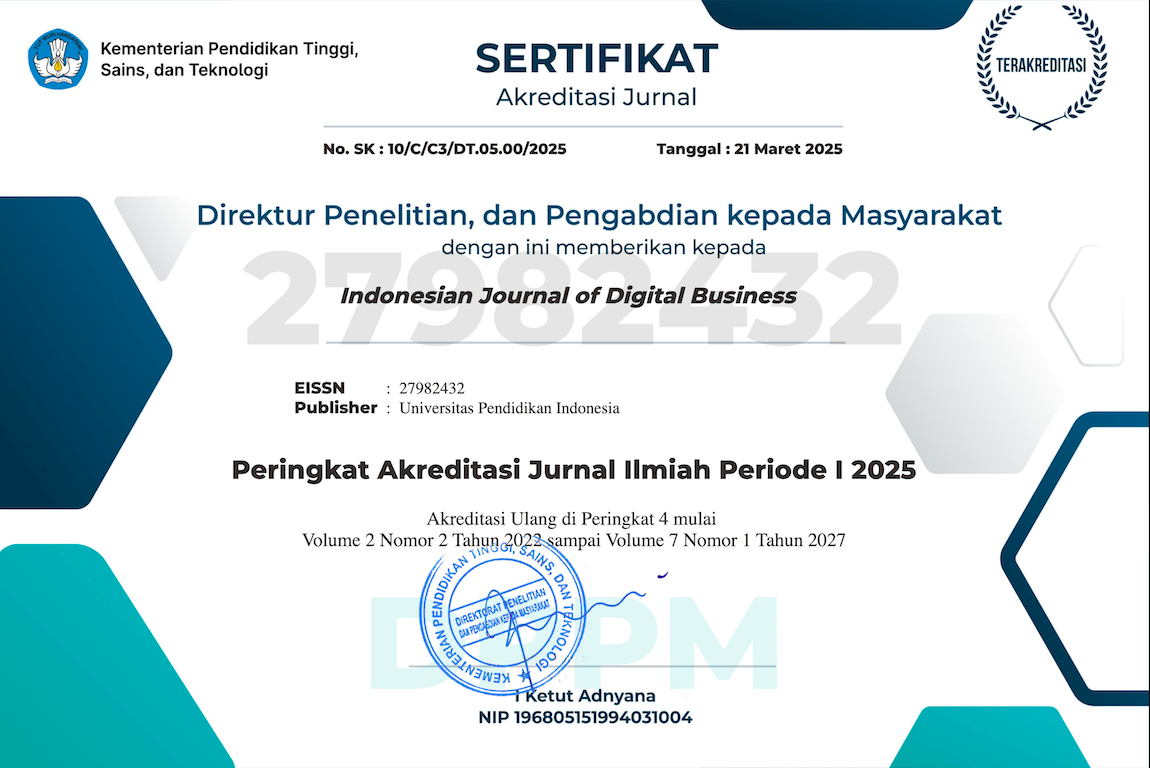Analisis Sentimen Masyarakat terhadap Layanan Pinjaman Online (Pinjol) di Indonesia: Studi Kasus Komentar TikTok
Abstract
Studi ini bertujuan untuk menganalisis dampak pinjaman online (Pinjol) terhadap akses keuangan bagi masyarakat Indonesia, dengan fokus pada manfaat, risiko, dan efektivitas regulasi yang ada. Menggunakan pendekatan deskriptif kuantitatif dan analisis sentimen berdasarkan data media sosial, studi ini mengumpulkan data dari komentar pengguna TikTok mengenai fitur TikTok Go, bersama dengan data tambahan dari Twitter dan Instagram antara Mei dan Juli 2025. Sebuah analisis terhadap 335 komentar menemukan bahwa 74% bersifat negatif, 19% netral, dan 7% positif. Pengguna sebagian besar mengeluhkan masalah teknis dan suku bunga yang tinggi daripada fitur itu sendiri. Temuan menunjukkan bahwa sentimen negatif lebih dominan karena masalah aksesibilitas dan praktik penagihan utang yang tidak etis. Analisis tematik mengungkapkan pentingnya regulasi dan perlindungan konsumen, dengan harapan agar OJK (Otoritas Jasa Keuangan) akan lebih efektif dalam mengawasi Pinjol.
Keywords
References
Bachmann, A., Becker, A., Buerckner, D., Hilker, M., Kock, F., Lehmann, M., ... & Funk, B. (2011). Online peer-to-peer lending—a literature review. Journal of Internet Banking and Commerce, 16(2), 1–18.
Balyuk, T. (2019). Financial innovation and borrowers: Evidence from peer-to-peer lending. Rotman School of Management Working Paper, (2802220).
Berg, T., Burg, V., Gombović, A., & Puri, M. (2020). On the rise of fintechs: Credit scoring using digital footprints. The Review of Financial Studies, 33(7), 2845–2897.
Butler, A. W., Cornaggia, J., & Gurun, U. G. (2016). Do local capital market conditions affect consumers' borrowing decisions? Management Science, 62(3), 741–759.
Chen, X., & Huang, B. (2022). Consumer protection in peer-to-peer lending: A comparative study. Journal of Consumer Policy, 45(2), 287–312.
Chen, Y., Huang, Y., & Ye, D. (2018). Credit allocation under peer-to-peer lending: Evidence from Funding Circle. SSRN Electronic Journal. https://doi.org/10.2139/ssrn.3112287
Cumming, D., & Hornuf, E. (2018). The economics of crowdfunding: Startups, portals and investor behavior. Palgrave Macmillan.
Cumming, D., Meoli, M., & Vismara, S. (2020). Investors' choices between cash and voting rights: Evidence from dual-class equity crowdfunding. Research Policy, 49(4), 103912.
Demirgüç-Kunt, A., Klapper, L., Singer, D., Ansar, S., & Hess, J. (2018). The Global Findex Database 2017: Measuring financial inclusion and the fintech revolution. World Bank Publications.
Emekter, R., Tu, Y., Jirasakuldech, B., & Lu, M. (2015). Evaluating credit risk and loan performance in online peer-to-peer (P2P) lending. Applied Economics, 47(1), 54–70.
Freedman, S., & Jin, G. Z. (2017). The information value of online social networks: Lessons from peer-to-peer lending. International Journal of Industrial Organization, 51, 185–222.
Fungáčová, Z., & Weill, L. (2015). Understanding financial inclusion in China. China Economic Review, 34, 196–206.
Gomber, P., Kauffman, R. J., Parker, C., & Weber, B. W. (2018). On the fintech revolution: Interpreting the forces of innovation, disruption, and transformation in financial services. Journal of Management Information Systems, 35(1), 220–265.
Hadad, M. D. (2017). Financial technology (fintech) di Indonesia. Kuliah Umum tentang Fintech, Indonesia Banking School.
Hu, Y., Li, Y., & Hu, H. (2019). Factors influencing the adoption of P2P lending: An empirical study in China. Electronic Commerce Research and Applications, 33, 100823.
Iyer, R., Khwaja, A. I., Luttmer, E. F., & Shue, K. (2016). Screening peers softly: Inferring the quality of small borrowers. Management Science, 62(6), 1554–1577.
Jagtiani, J., & Lemieux, C. (2018). Do fintech lenders penetrate areas that are underserved by traditional banks? Journal of Economics and Business, 100, 43–54.
Kim, D. J., Ferrin, D. L., & Rao, H. R. (2008). A trust-based consumer decision-making model in electronic commerce: The role of trust, perceived risk, and their antecedents. Decision Support Systems, 44(2), 544–564.
Malaquias, R. F., & Hwang, Y. (2019). Mobile banking use: A comparative study with Brazilian and US participants. Computers in Human Behavior, 99, 132–140.
Milne, A., & Parboteeah, P. (2016). The business models and economics of peer-to-peer lending. European Credit Research Institute Research Report, 17, 1–33.
Morgan, P. J., Huang, B., & Trinh, L. Q. (2019). The need to promote digital financial literacy for the digital age. ADBI Working Paper Series, 947.
Morse, A. (2015). Peer-to-peer crowdfunding: Information and the potential for disruption in consumer lending. Annual Review of Financial Economics, 7, 463–482.
Philippon, T. (2016). The fintech opportunity. National Bureau of Economic Research Working Paper, 22476.
Rau, P. R. (2020). Law, trust, and the development of crowdfunding. SSRN Working Paper. https://ssrn.com/abstract=2989056
Riyanto, S., & Rasmini, N. K. (2022). Determinants of peer-to-peer lending adoption in Indonesia: An extended technology acceptance model approach. Journal of Financial Services Marketing, 27(3), 156–168.
Rosavina, M., Rahadi, R. A., Kitri, M. L., Nuraeni, S., & Mayangsari, L. (2019). P2P lending adoption by SMEs in Indonesia. Qualitative Research in Financial Markets, 11(2), 260–279.
Rusydiana, A. S. (2021). Bagaimana mengatur fintech syariah di Indonesia? Pendekatan interpretive structural modeling (ISM). Jurnal Ekonomi & Keuangan Islam, 7(1), 73–89.
Serrano-Cinca, C., Gutiérrez-Nieto, B., & López-Palacios, L. (2015). Determinants of default in P2P lending. PloS One, 10(10), e0139427.
Tang, H. (2019). Peer-to-peer lenders versus banks: Substitutes or complements? The Review of Financial Studies, 32(5), 1900–1938.
Yum, H., Lee, B., & Chae, M. (2012). From the wisdom of crowds to my own judgment in microfinance through online peer-to-peer lending platforms. Electronic Commerce Research and Applications, 11(5), 469–483.
Ziegler, T., Shneor, R., Wenzlaff, K., Odorovic, A., Johanson, D., Hao, R., & Ryll, L. (2020). The Global Alternative Finance Market Benchmarking Report. Cambridge Centre for Alternative Finance.
DOI: https://doi.org/10.17509/ijdb.v5i3.89854
Refbacks
- There are currently no refbacks.
Copyright (c) 2025 Universitas Pendidikan Indonesia (UPI)

This work is licensed under a Creative Commons Attribution-ShareAlike 4.0 International License.
Indonesian Journal of Digital Business is published by Universitas Pendidikan Indonesia (UPI)
and managed by Department of Digital Business
Jl. Dr. Setiabudi No.229, Kota Bandung, Indonesia - 40154
View My Stats





1.png)